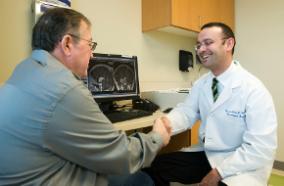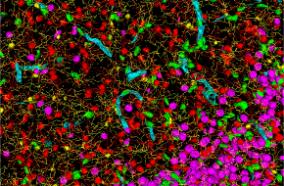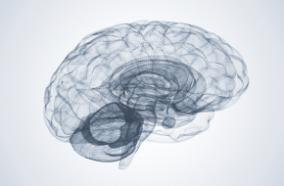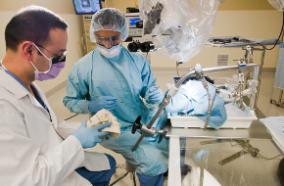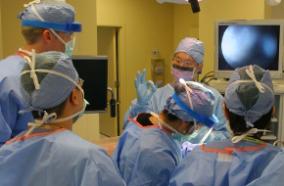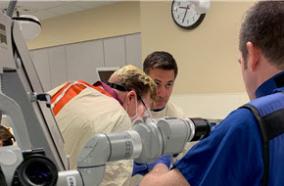8 months 1 week ago
CONCLUSIONS: This initial ex vivo clinical study demonstrated the ability of TumorID to rapidly differentiate and classify various pathologies and surrounding brain in a configuration that can be easily translated to scan in vivo. This classification power could allow TumorID to augment surgical decision-making by enabling rapid intraoperative tissue diagnostics and border delineation, potentially improving patient outcomes by allowing for a more informed and complete resection.
Tanner J Zachem
8 months 1 week ago
No abstract
Rommie E Amaro
8 months 1 week ago
CONCLUSION: Activities of transcriptional programs offer significantly better prognostic and predictive assessments of treatments across different stages of MM in an individual patient.
Carl Murie
8 months 1 week ago
BACKGROUND AND OBJECTIVES: The objective was to evaluate the association of subacute postconcussion symptoms (with the total Rivermead Post-Concussion Questionnaire [RPQ] score) with persistent symptoms, functional limitations, and quality of life at 6 months in patients with mild traumatic brain injury (mTBI).
Shawn R Eagle
8 months 1 week ago
CONCLUSIONS: Standardizing QA parameters via injection bias correction improves occlusion prediction accuracy for flow diverter-treated IAs. Adding explainable AI (e.g., LIME) clarifies model decisions, demonstrating the feasibility of clinically interpretable AI-based outcome prediction.
Parmita Mondal
8 months 1 week ago
Astrocytes play vital roles in regulating brain states across organisms. Specifically, they serve several roles in regulating breathing behaviors and associated brain states, including facilitating transitions between phases of breathing by sensing small changes in O(2) and CO(2) levels, regulating the sleep-wake cycle, and impacting arousal and wakefulness. Here, we tested the hypothesis that astrocytes in the ventral respiratory column (VRC) are important for arousal and sigh generation in...
Jan Marino Ramirez
8 months 1 week ago
CONCLUSIONS AND RELEVANCE: In the NOTIFY-LVH randomized clinical trial, a centralized population health coordinator-led notification and clinical support pathway for individuals with LVH on prior echocardiograms increased the initial treatment of hypertension. This work highlights the potential benefit of leveraging preexisting but potentially underutilized cardiovascular data to improve health care delivery through mechanisms augmenting the traditional ambulatory care system.
Adam N Berman
8 months 1 week ago
Spetzler-Martin Grade IV arteriovenous malformations (AVMs) are challenging due to high risks associated with both treatment and natural progression. This study compares the outcomes of microsurgical resection and stereotactic radiosurgery (SRS) in high-grade AVMs, analyzing obliteration rates, complications, and functional outcomes. A retrospective cohort of 96 patients treated with either microsurgical resection (33 patients) or SRS (63 patients) was analyzed. Propensity-score matching was...
Salem M Tos
8 months 2 weeks ago
Radiation is an effective treatment for many brain tumors, but often causes cognitive impairment. Ultra-high dose rate (FLASH) radiotherapy is less toxic to many normal tissues and may protect against adverse cognitive effects of cranial irradiation. Adult male Sprague Dawley rats received a single 18 Gy fraction of cranial irradiation with protons at 1 Gy/s (CV), 60 Gy/s (FLASH-60), 95 Gy/s (FLASH-95), or sham treatment (Control) (n ≥ 22/group). Rats were tested in open-field, acoustic (ASR)...
Michael T Williams
8 months 2 weeks ago
Cercospora leaf spot (CLS), caused by the fungus Cercospora beticola, is an important determinant of table beet foliar health. Primary inoculum sources include infested crop residues and alternative hosts, but seed-to-seedling transmission has also been reported. We evaluated the localization of C. beticola in table beet seeds and contribution of infested seeds to CLS outbreaks in field studies. In seed dissection experiments, C. beticola was more frequently isolated from the pericarp (95.6%)...
Pratibha Sharma
8 months 2 weeks ago
CONCLUSIONS: FDS treatment for recurrent/residual aneurysms after SAC represents a viable treatment option for these challenging cases with acceptable safety and reasonable occlusion rates, although lower than de novo FDS occlusion rates.
Mohamed M Salem
8 months 2 weeks ago
CONCLUSIONS: Onyx, a liquid embolic agent, reduces EBL which may explain the shorter surgery duration, higher GTR rates, and lower retreatment rates. Procedural risks and patient selection require further investigation.
Julio Isidor
8 months 2 weeks ago
CONCLUSIONS: This international survey of spine surgeons demonstrated that currently, there is limited use of IOUS in the surgical management of acute SCI. Understanding the needs of spine surgeons and tailoring educational opportunities may increase the role of IOUS. Given the importance of surgical decompression in enhancing outcomes after acute SCI coupled with the ability of IOUS to assess decompression, greater adoption of IOUS could further enhance the efficacy of decompressive surgery.
Chris J Neal
8 months 2 weeks ago
Monitoring the quality of water resources is essential to determine environmental impacts and seek sustainable management solutions. In this work, we demonstrated the toxicity of effluents and surface water of an important river in Central Brazil, the Meia Ponte River, using not just physicochemical parameters but also ecotoxicological bioindicators, such as Aliivibrio fischeri, Allium cepa, Lactuca sativa, and Salmonella typhimurium. To complement this data, we analyzed soil toxicity and...
Igor Romeiro Dos Santos
8 months 2 weeks ago
CONCLUSIONS: Results from the first eleven distributions indicate that the EQA scheme has facilitated improved performance of laboratories over time, highlighting the value of implementing such programmes. EQA schemes are critical to safeguarding the reliability of data and diagnoses, especially in situations where NAAT methodologies and protocols are used. In future, funders should make participation in an EQA scheme a requirement for laboratories, and countries can take initiatives to embed...
Rebecca M Thomson
8 months 2 weeks ago
CONCLUSIONS: Vascular operations, on average, generate 108.47 kg of CO2e from waste and fluoroscopy, the equivalent of driving an average gasoline-powered vehicle for 278 miles. This study found a correlation between increased fluoroscopy time and CO2e. It also found that the rate of emissions differs between different operations, suggesting a role in optimizing fluoroscopy and intraoperative techniques to lower emissions. Efforts to track current energy output from imaging devices, investing in...
Omar Moussa Pasha
8 months 3 weeks ago
In the retina, Ca^(2+) influx through Ca(v)1.4 Ca^(2+) channels triggers neurotransmitter release from rod and cone photoreceptors. Changes in extracellular pH modify channel opening, enabling a feedback regulation of photoreceptor output that contributes to the encoding of color and contrast. However, the mechanisms underlying pH-dependent modulation of Ca(v)1.4 are poorly understood. Here, we investigated the role of the C-terminal domain (CTD) of Ca(v)1.4 in pH-dependent modulation of Ba^(2+)...
Juan de la Rosa Vázquez
8 months 3 weeks ago
OBJECTIVE: To educate health care professionals and nurses on buprenorphine initiations in pregnancy, establish a mutual care agreement to promote therapeutic partnership, and standardize buprenorphine initiation using the Epic electronic health record (EHR) order set.
Amy Lee
8 months 3 weeks ago
Reflection exercises have been used within anatomy education to evaluate empathy, humanism, and professionalism. A typical reflection exercise consists of directed prompts to guide the student's reflection as it relates to the experience and/or research question. The aim of this study was to utilize reflections through an open-ended format to enable students to explore their experience participating in donor dissection as they form their professional identity. The "Seven Questions" exercise was...
John Arthur
8 months 3 weeks ago
BRAF-mutated colorectal cancer correlates with poor prognosis and limited response to standard treatments. Combining immune checkpoint inhibitors with BRAF/MEK inhibitors shows promise against BRAF-mutant melanoma in both preclinical and clinical trials. Therefore, we hypothesized that the treatment would be effective against BRAF-mutant colorectal cancer. In this study, we assessed the efficacy of combining immune checkpoint inhibitors with BRAF and/or MEK inhibitors in BRAF-mutant colorectal...
Eunyoung Tak
"university of washington"[affiliation] and neurological surge...: Latest results from PubMed
More posts about UW Neurological Surgery Recent PubMed Publications

